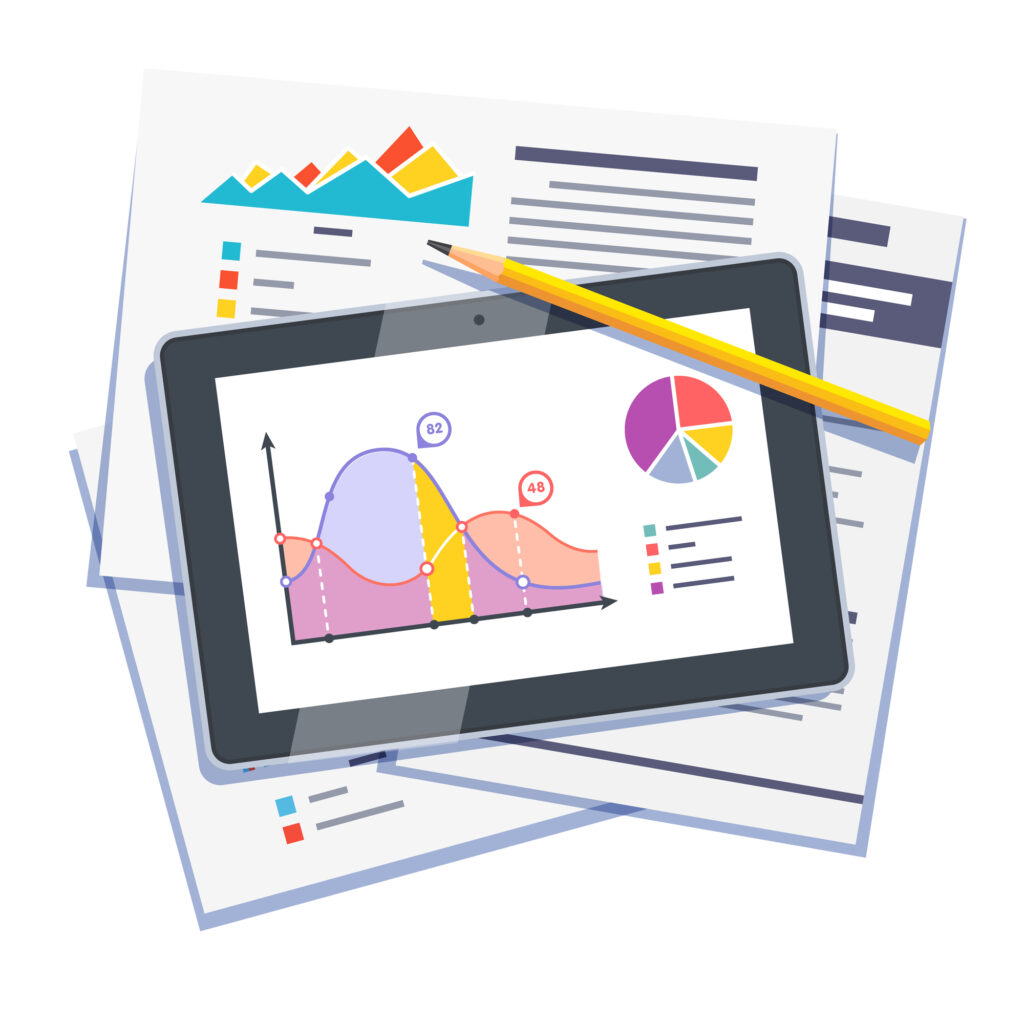Bookkeeping for Retail Stores
Running a store is a big job! There’s so much to do—like keeping track of what’s on the shelves, helping customers, making sales, and working with suppliers. It’s easy to forget about things like keeping the store’s money organized. But guess what? Keeping track of money is super important for a store to do well! It’s like the secret recipe for success. If you want to know if your store is making money, be smart about what you buy, and make sure everything is running smoothly, you need to keep good records. That’s where S.K.I.L.L. Consultants come in! We help with all the bookkeeping, so your store can keep growing and shining.
Common Bookkeeping Problems Retailers Face – Are You One of Them?
Do You Struggle to Keep up With Recording High Volumes of Daily Sales, Refunds, and Returns?
Is Your Inventory Consistently Incorect Across Your Pos, Books, and Physical Count?
Have You Noticed Discrepancies Between Your Sales and Bank Deposits?
.
Do You Often Catch Mistakes or Fraudulent Charges Late—or Not at All?
Do You Struggle to Keep up With Payroll Calculations, Tips, or Overtime?
Do You Find Yourself Manually Entering Data from One System to Another?
.
Retail Store Management Is Demanding: Your Books Should Reflect That
Retail businesses are fast-paced and full of moving parts. Whether you’re running a small boutique or a larger store, managing everything—from daily sales and inventory to payroll and vendor relationships—can quickly become overwhelming. Bookkeeping for retail isn’t just about balancing the books at the end of the month; it involves keeping track of a constant flow of financial data, which can get pretty complex.
As a retail store owner, you might be great at what you do—maybe you have a keen eye for trends, a knack for customer service, or you’ve built solid relationships with your suppliers. But when it comes to managing your finances, it’s easy to feel bogged down. You’re not alone in this. A lot of retail business owners struggle with bookkeeping, and it’s not because they

don’t understand finances. In fact, many owners know their business inside out. The problem lies in the sheer volume, variety, and speed of financial transactions they have to handle every day.
A glimpse into the financial responsibilities retail store owners juggle:
Logging each sale accurately
Reconciling totals from different payment methods (cash, credit card, mobile payments, BNPL)
Syncing multi-channel sales with a central accounting system
Tracking inventory movement in real-time
Recording spoilage, theft (shrinkage), or damage
Matching purchase orders with invoices and receipts
Calculating accurate Cost of Goods Sold (COGS)
Irregular income flow due to delayed vendor payments or credit card settlements
Large inventory purchases that drain cash unexpectedly
Poor forecasting for slow sales months
How S.K.I.L.L Consultants Help?

Tracks Daily Sales Accurately

Manages Inventory in Real-Time

Categorizes Expenses Properly

Improves Cash Flow Monitoring

Automates POS Integration

Ensures Timely Bank Reconciliation
S.K.I.L.L. Consultants Checklist for Retail Stores Book Keeping
Ensure all sales (cash, card, or online transactions) are accurately recorded in your bookkeeping software.
Track any refunds, discounts, or exchanges.
Verify that your point-of-sale (POS) system is synced with your bookkeeping software.
If you handle cash, count your drawer and ensure it matches your daily sales. Any discrepancies need to be noted.
Reconcile credit card payments against your POS system to ensure accuracy.
Check your bank account daily for any deposits, withdrawals, or fees. This ensures you’re not missing any transactions.
Make sure your cash flow is adequate to cover daily operations.
Monitor stock levels and note any items that are selling quickly or need to be reordered. This helps avoid stockouts or overstocking.
If your inventory software integrates with your bookkeeping system, make sure it’s up to date with daily sales and purchases.
Any money transferred between the business account and petty cash, or used for petty expenses, should be recorded immediately.
- Compare your bank account transactions to your bookkeeping system to ensure everything aligns. Look for discrepancies like missed charges or duplicate entries.
If your business has customers with outstanding invoices, check for any overdue payments.
Send reminders for unpaid invoices and record incoming payments.
- If you use petty cash for small daily expenses (like office supplies or employee reimbursements), record those transactions and make sure the petty cash balance is accurate.
If your business has customers with outstanding invoices, check for any overdue payments.
Send reminders for unpaid invoices and record incoming payments.
Review any outstanding bills from vendors and suppliers. Make sure payments are scheduled or made on time to avoid late fees.
Ensure any purchases made during the week (office supplies, inventory, etc.) are properly recorded.
Check your inventory levels for accuracy. This will allow you to catch any discrepancies and make sure inventory is being recorded correctly.
Make sure that any purchases or stock received during the week are properly recorded in your books.
If you pay employees weekly, ensure that all hours worked, overtime, and commissions are accurately tracked.
Review payroll for any errors, like miscalculations or missed deductions.
Record payroll expenses in your accounting software.
Reasons Bookkeeping Helps a Retail Store Run Smoothly
Keeps Track of Every Dollar 💵
Bookkeeping is like a notebook that writes down every penny a store makes and spends—so nothing gets lost!Shows What’s Selling the Most 🧸👟
It helps the store owner know which toys, clothes, or snacks people buy the most—so they can stock more of them.Stops Money From Disappearing ❌💸
Bookkeeping helps catch mistakes or missing money quickly, kind of like being a store detective!Helps Buy Just the Right Stuff 📦
By knowing what’s left on the shelves, it helps the store buy what it needs—so there’s not too much or too little.Pays Workers the Right Amount 💼💰
It keeps track of how much employees work, so they get paid fairly and on time.Shows if the Store is Making a Profit 📊
Bookkeeping tells the owner if they’re making more money than they spend—or if they need to make changes.Makes Tax Time Easier 🧾
At the end of the year, bookkeeping helps fill out tax forms without stress—kind of like doing homework early!Saves Time and Headaches ⏰💆
Instead of guessing, store owners always know what’s going on with their money—no more confusion.Helps Plan for Big Goals 🎯🏪
Want to open a second store or buy a new display? Bookkeeping helps plan and save for it!Keeps Everything Fair and Honest ✅
With clear records, no one has to wonder where the money went. Everything’s out in the open!
Who Should Consider Using Retail Bookkeeping Services?








Frequently Asked Questions
The S.K.I.L.L. Consultants Guide to Bookkeeping for Retail Stores
Set aside a portion of your monthly earnings for taxes. Review sales tax collected and ensure it’s set aside for your quarterly filings.
Ensure all receipts and financial records are in order for the upcoming tax season. Consider working with an accountant to review everything.
Review cash flow statements to see if your business is generating enough cash to meet its obligations (like rent, payroll, and vendor payments).
Look for trends in cash flow to anticipate any future issues, such as seasonal fluctuations.
Make sure all vendor invoices have been paid on time to maintain good relationships and avoid late fees.
Review your payment terms with suppliers and adjust orders or renegotiate terms if necessary.
Check your P&L statement to assess your income, cost of goods sold (COGS), and operating expenses. This will give you a snapshot of whether you’re running at a profit or loss.
Identify areas where expenses can be reduced or where sales can be increased.
Reconcile your bank accounts and credit cards to ensure that all transactions are correctly recorded.
Make sure that your accounting records are balanced (debits equal credits).
Run a full inventory count if necessary. Compare the actual stock levels to your records and adjust any discrepancies.
Write off obsolete or unsellable inventory, and ensure this is reflected in your financials.
Take a quick look at the sales figures for the week and compare them to previous weeks or months. Identify trends, such as slow-or-busier periods, so you can adjust your operations accordingly.
Track gross profit margins to ensure profitability is on target.
Organize all receipts for purchases, repairs, or other expenses made during the week.
Scan and store receipts digitally if possible to make future tax filing easier.
Make sure any Credit Card Payments, Loan Repayments, or Lines of Credit Balances Are Up To Date.
